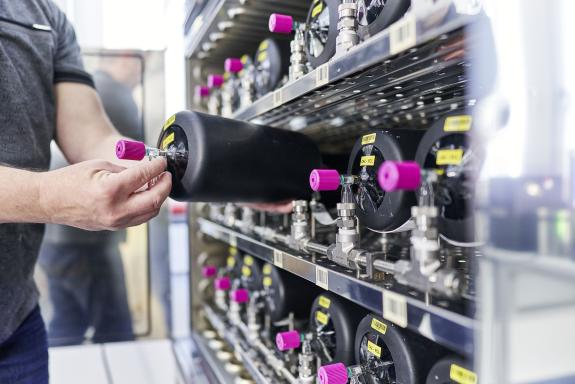The Integrated Carbon Observation System, ICOS, is a Europe-wide observation network that provides very precise greenhouse gas measurement data. It provides the basis for the scientific evaluation of the development of greenhouse gas emissions over time. This is an important basis for decisions on curbing global warming.
ICOS makes standardized data from 180 observation stations in 16 European countries freely available. The stations measure greenhouse gas concentrations in the atmosphere as well as carbon fluxes between the atmosphere and land ecosystems or the oceans. The measurement data obtained is essential for scientific analyses in order to estimate the climate dependency of greenhouse gas emissions and to be able to make more reliable forecasts.
ICOS coordinates the respective measurement networks and is supported by various central institutions. The Max Planck Institute for Biogeochemistry in Jena operates the central laboratory for measuring air samples and calibrating reference gases. Another central laboratory for the determination of radiocarbon in carbon dioxide is located at the University of Heidelberg.
Our flask and calibration laboratory analyzes air samples for their greenhouse gas content and other components that can provide additional information on specific emission sources. How representative such an individual air sample is for the respective location depends on the meteorological conditions under which it was taken. The Flasklabor has developed and manufactured automated sampling devices for the ICOS monitoring network. They allow various options for the targeted filling of flasks under specified conditions. This ensures that such a single air sample is representative for the respective location and was not taken under unfavorable meteorological conditions.
We invite you to visit our laboratory and find out why it is complicated to accurately determine trace gases in the air. We will show you how we ensure high accuracy of measurements. Take a look at the places where such measurements are taken between Spitsbergen and Lampedusa.

No future events in this series.
